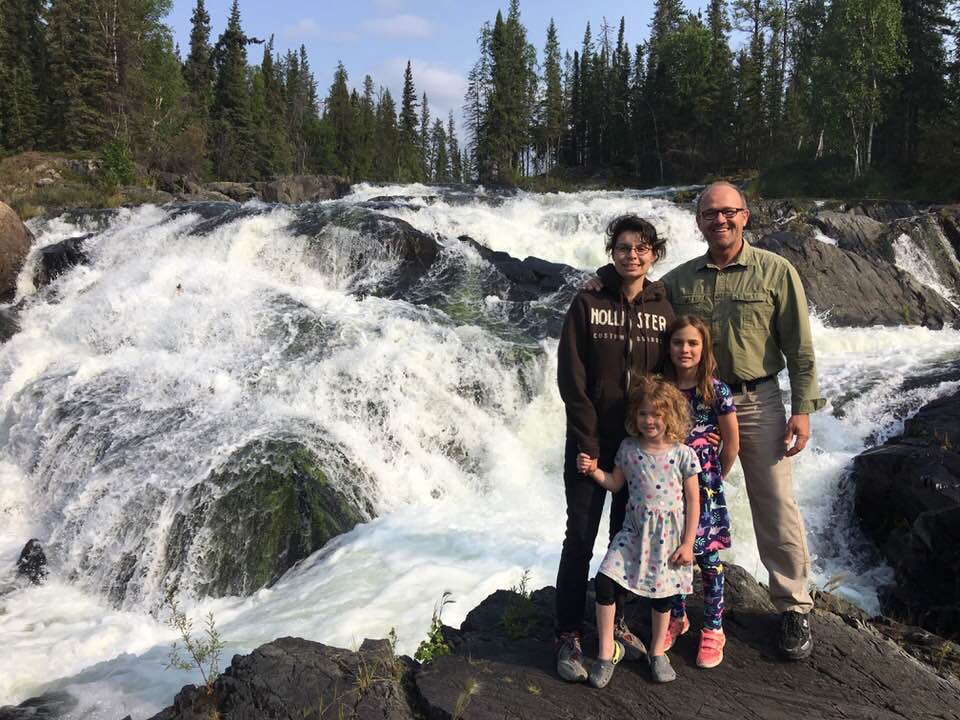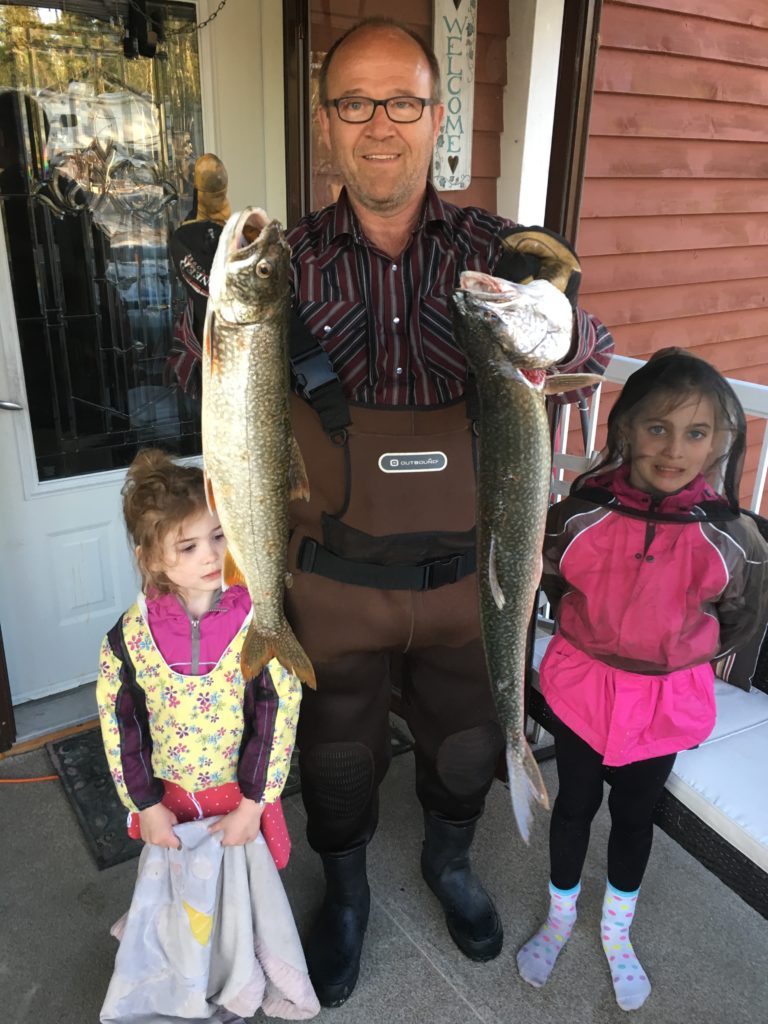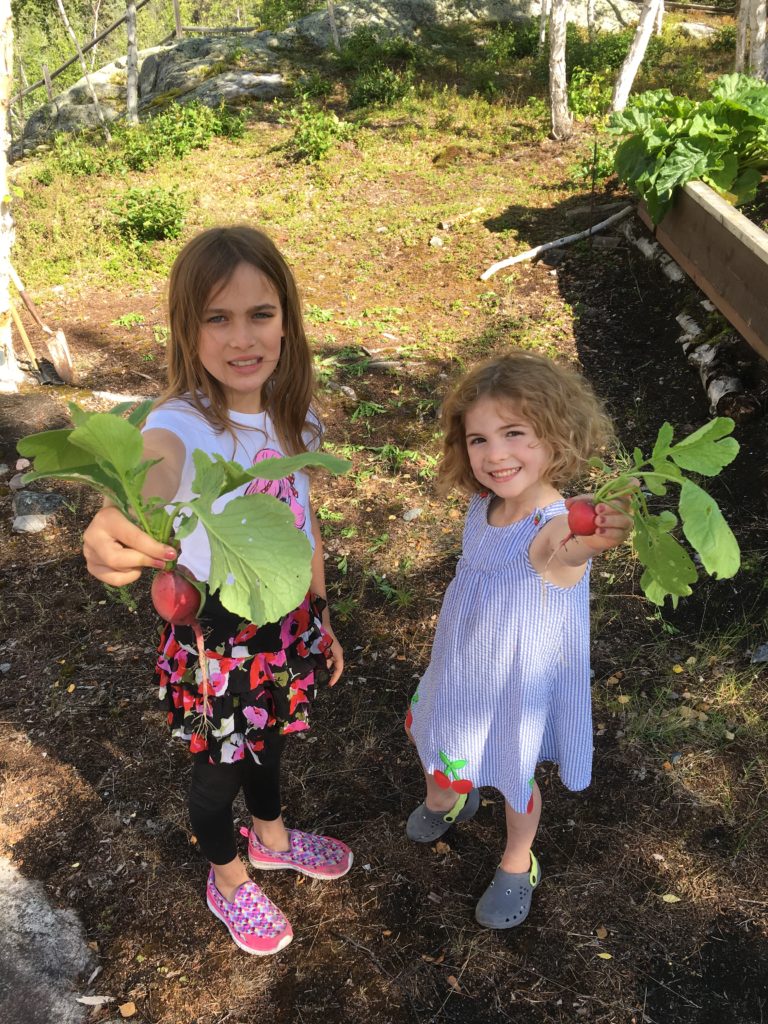A look at life off-grid

Life off-grid can be challenging. Nobody knows that more than a mother with two kids.
When Sarita Harbour and her husband Dan started a new life in the Northwest Territories of Canada, they did not originally plan to move off the grid. A lifelong passion for the pioneer lifestyle, the allure of a beautiful house far from civilization and the desire to start fresh eventually drew them in.
The couple moved with their two young children (each on their second marriages, they have seven kids between them) over 20 miles away from the next closest city, Yellowknife.
Since then, Harbour’s life off-grid has been an adventure, one that she has been chronicling in her blog An Off Grid Life. In our Behind the Homestead Blog Q&A with Harbour, she tells us about handling off-grid emergencies with young kids, growing vegetables in the tundra and staying warm on a subarctic homestead.
Hello Homestead: Tell me about your background. Where are you from, and what did you do before you started homesteading?
Sarita Harbour: I was born in northern Ontario, then spent many years living in the Toronto area. I grew up with a dad who loved the outdoors: hunting, fishing, gardening and learning to be as self-sufficient as possible. Before we moved up to the Northwest Territories to live off the grid, I was a financial advisor in Burlington, Ontario, a suburb of Toronto.
HH: What inspired you to start homesteading?
SH: As a child, I absolutely loved reading anything about pioneer times. Honestly, I re-read the “Little House on the Prairie” series so many times the covers of some of the paperbacks just wore out and fell off! I loved the idea of a family working together to provide for themselves in as many ways as possible. This was long before the Internet, so I turned to books to teach myself whatever I could.
HH: How did you decide to live off the grid in the Northwest Territories? How did you prepare?
SH: We first moved to the far north because my husband accepted a job here. We weren’t specifically planning to live off the grid, but the home we fell in love with happened to be too far from Yellowknife to be on the grid. So, here we are: living with solar panels, a battery bank, two diesel generators, a wood stove and getting water from the lake behind our home.
HH: As a parent, what were your considerations in terms of safety when you decided to go off the grid?
SH: I didn’t (and don’t) have safety concerns about being off the grid. In fact, when there are power outages in town during the winter months, I think we’re far better equipped to deal with the cold than our friends who don’t have wood stoves or generators to run heaters!
My main safety concerns as a mother are more to do with the remoteness and isolation of our location. In an emergency [when you life off-grid], it can take upwards of 30 minutes for an emergency services vehicle to reach us, if they can even make it.
In June, a lightning strike started a wildfire [about half a mile away] from our house while I was in town with our two youngest children. My nephews, husband and brother-in-law raced over on ATVs and spent a good hour with shovels trying to stop it while my sister-in-law called the [Royal Canadian Mounted Police].
We know just how fast a wildfire can spread, and that the firefighters could take a while to get out here. They all showed up about an hour later, and even sent a water bomber out!
HH: What were your first homesteading projects?
SH: Because we are so far north, our homesteading activities look a little different than most.
Although other northern areas — like southern Alaska, or northern Alberta and Manitoba — offer conditions suitable for livestock, it’s much tougher here due to the poor soil quality for feed and the extremely high cost of shipping it here. We knew we’d be unlikely to have cows or pigs, but that we can hunt and fish for protein.
Our first main homesteading project was to overhaul the raised garden that was here so we’d have fresh vegetables. We added fresh topsoil and built up the beds, adding a screen to keep Arctic hares out. Our second project was to start collecting [and] scavenging supplies to construct a greenhouse to lengthen our growing season.

HH: When and why did you decide to start your blog?
SH: My blog, An Off Grid Life, evolved from my previous website, Avamum, in 2014. It was really just a site about home cooking, knitting, crocheting [and] parenting, but in several posts, I mentioned that we live off the grid in the subarctic.
I started An Off Grid Life because I got so many questions from people in cities [and] suburbs about what our life here is like — how we manage without public utilities in such a cold climate, what it’s like to live in a boreal forest [with] bears, wolves [and] lynx.
HH: Tell me about homeschooling your kids off the grid. How do you plan to make sure they are getting a well-rounded education?
SH: Great question! We’re going into our seventh year of homeschooling and absolutely love it.
To make sure they get a well-rounded education, I start with a boxed Christian curriculum for History, Bible, Literature, Science and Language Arts. Then I add a separate Math, Canadian Studies, Art and Music curriculum.
We do formal “school” lessons five mornings a week for about three hours. We also incorporate outdoor learning and wilderness skills into our homeschool. That’s very important to us.
Finally, the kids have enjoyed participating in several activities in town over the years, including gymnastics, swimming, dance and a homeschool gym class.
HH: How do you power your off-grid home?
SH: Our home is powered with nine 250-watt solar panels, [which we added] this summer. Previously we had eight 80-watt panels. Our backup power includes two diesel generators and a portable gasoline generator. For heat, we have a massive wood stove and a brand-new propane combi-boiler [that offers both space heating and hot water] to power our in-floor heating on the main floor. We pump our water up from the lake behind our house into a massive 1,200-gallon water tank.
HH: How do you manage your budget while living off the grid?
SH: It isn’t so different from when we lived on the grid. I’m a former financial advisor, so budgeting comes naturally! We budget for ongoing expenses, such as propane, internet, wood, groceries, gasoline and also for the ongoing renovations, such as our new boiler.
HH: What else do you do to generate income while you are living off the grid?
SH: My husband is retired and I work from home. Our biggest income is from my financial content company, which provides content on financial planning and credit management for websites owned by various banks and insurance companies across North America. [My blog] also generates a small income to support our family.
HH: The area where you live is very cold. How do you try to garden for self-sufficiency? Where do you get the things you cannot grow?
SH: It’s tough! Our growing season is compressed into about a seven-to-eight week season, although this is lengthening each year. But we also get about 20 hours of sunlight [per day] through June and July.
Lettuce, radishes, cucumbers, zucchini, rhubarb, all sorts of berries, potatoes, carrots, onions — basically, all the northern fruits and veggies grow here. We’re experimenting with permaculture design and planting in microclimates on our property, as we have a lot of bedrock that reflects the sun so certain areas on our land are almost tropical. We also bought grow lights last year and will grow indoors through the winter.
Whatever we can’t grow, we buy at the co-op grocery store in Yellowknife.

HH: What are the greatest challenges of living off the grid? The greatest joys?
SH: The greatest challenge of living off the grid in this type of environment and climate has been keeping the house warm through the winter, though this may improve with our new boiler. Our old one was second-hand 35 years ago. Woodstove heating is great up to about 2,800 square feet, and our home is just under 5,000 square feet since our recent renovations.
The greatest joy is the feeling of independence that comes living this lifestyle, providing our own food [from] fishing and hunting [and] gardening and being able to generate our own energy.
HH: What are you doing on your homestead right now that you really enjoy?
SH: We’re doing a major renovation to include an all-season sunroom on the lakeside, and planning a new built-in greenhouse that will stretch across the south side of our home. We’re having a great time planning the greenhouse.
[My husband] is also doing a lot of research into keeping chickens up here and how to build a chicken coop that doesn’t need power. Others in the area have done it, but the predator issue is the biggest problem. Wolves, bears and pine martens all like chickens!
HH: What do you hope for the future of your homestead?
SH: Eventually, we hope to keep goats as well as chickens, build a smokehouse and dig out a second root cellar as well. But for now, we’re focused on expanding our vegetable growing efforts because produce is just so expensive to buy this far north.
More than anything, I hope that we can remain here until our very old age. It would be great if a couple of our kids could carry on and expand what we’re doing.
This Q&A was edited for clarity and length.
